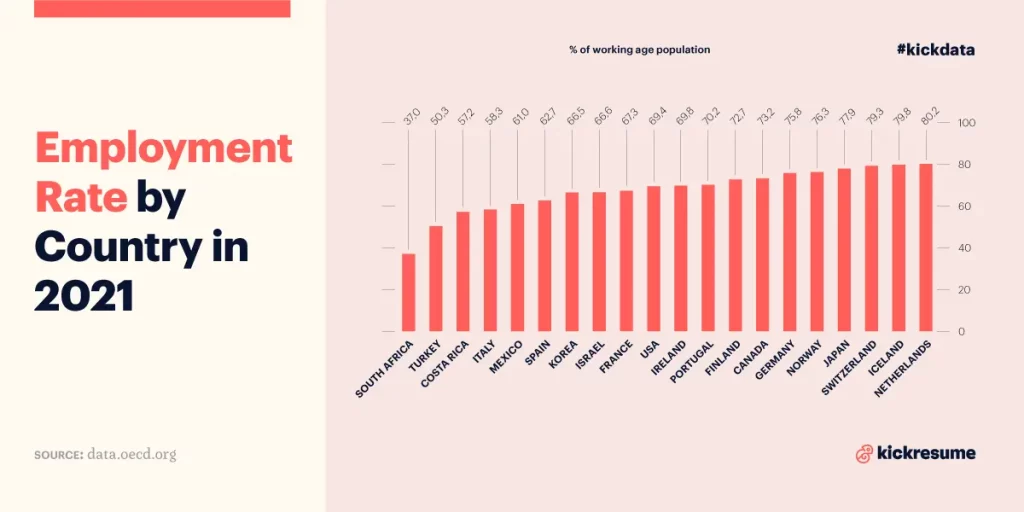Employment Rate by Country in 2021
The employment rate is indeed an important benchmark indicating the state of the labor market. We may say that it’s more reliable than the unemployment rate which takes into consideration only people actively looking for work relative to the total labor force.
Alternatively, the employment rate includes the entire adult population. It measures the ratio of the employed to the working age population (aged 15 to 64). Not only may this include salaried workers but also self-employed people and unpaid staff who work for family-owned businesses.
The Dutch top the employment rate list
In 2021, the adult employment rate in the Netherlands surpassed any other OECD (Organization for Economic Cooperation and Development) country with its 80.2 percent of working age population. This was way above the average for the entire OECD bloc (67.8 percent).
What does it mean? It looks like the Netherlands excels at creating and filling job vacancies. It is actually so successful at creating job opportunities that it has more vacancies than the number of unemployed people. Just to illustrate, in June 2021 there were 106 vacancies for every 100 unemployed people.
More than 50 percent of all job openings in the Netherlands were related to trade, business services, and the healthcare sector. So if you’re a marketing associate, an accountant, or a nursing assistant struggling to find a job, the Land of Tulips might have some unfilled positions to offer.
And if that comes to naught, you can still try to apply for a job in such countries as Iceland or Switzerland, where the employment rates fell closely behind the Dutch one (at 79.8 and 79.3 percent respectively).
Lowest employment rate hits South Africa
When we look at the bottom of the OECD list of countries by employment rate, we’ll find South Africa with a comparatively small percentage of working age population — 37 percent.
Numerous companies in South Africa presented their biggest challenge — to find workers with needed skills. The country had more than 50% of mismatched workers, which means that low education levels and training are not providing the needed skill-set in the labor market.
Undoubtedly, only a supportive environment can produce job growth. However, in order to build a supportive environment, one might need favorable policies. And that’s exactly when the government should get involved.



